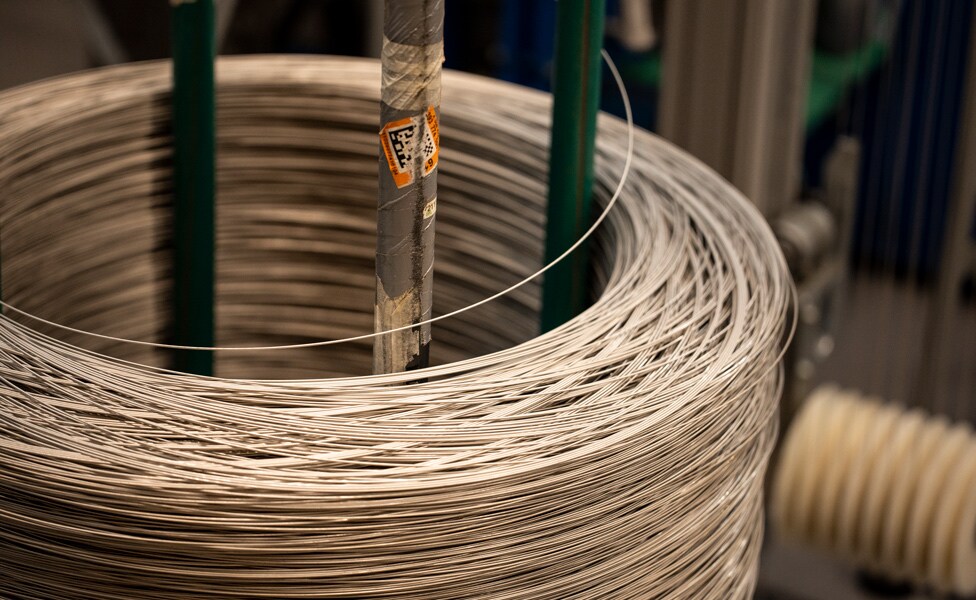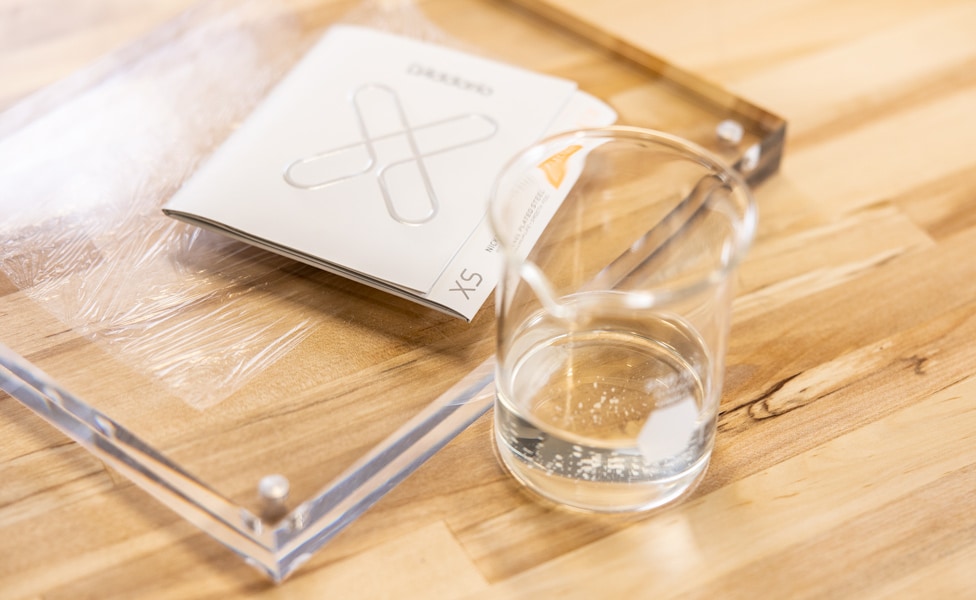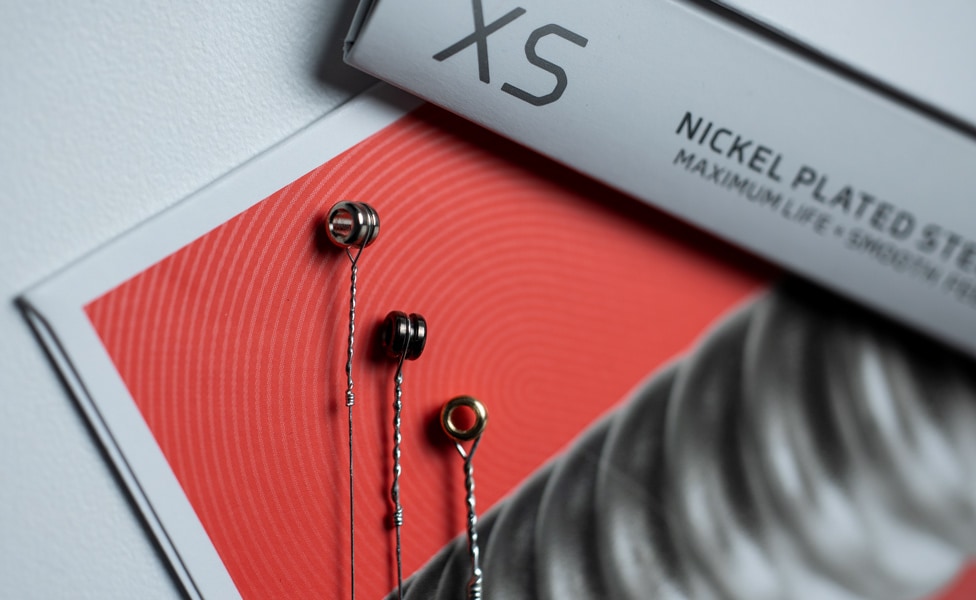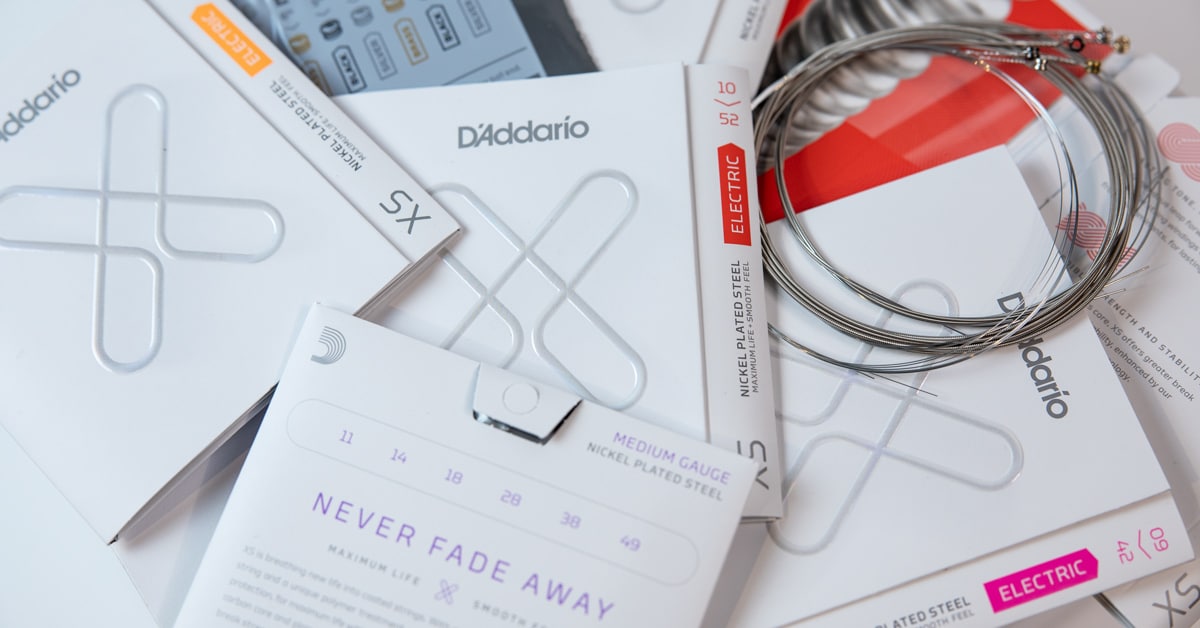Since innovating a modern, rock-guitar-approved nickel-plated steel string in the 1960s, D’Addario has never stopped looking for ways to improve the performance of their products. The latest evolution is the company’s re-engineering of coated strings—a journey that required developing new processes, designing custom manufacturing equipment and even formulating the film coating to do the job right.
From the company headquarters in Farmingdale, New York, Chairman of the Board and Chief Innovation Officer, Jim D’Addario, details the trials, challenges and ultimate victory of bringing the new XS coated strings—which use NY Steel for the core and plain strings and nickel-plated steel for the wraps—to market. He also looks into the future of coated strings, and why the XS formulation is a boon to pros and hobbyists alike.
Look for embedded video of our interview with Jim D’Addario, as well as guitarist Alex Skolnick’s demo and initial impressions of the XS electric strings.
D’Addario has a long history of innovation with musical-instrument strings. Can you walk us through the XS electric guitar string project?
Jim D'Addario: The laboratory we're in today is kind of “Curiosity Central.” We’re curious folks here, and we're always trying to learn new things. About five or six years ago, we started to develop the XS electric-guitar strings. The goal was to make the best and longest-lasting coated string out there. We were able to do that by learning more technologies and incrementally incorporating them into the process. For example, when we coat a string with the XS process, the wire temper changes slightly. To compensate for this, we adjust our steel-wire temper in our wire mill, particularly on the thinner wound strings. If we didn’t make our own wire, we wouldn’t be able to do this. It gives us a huge opportunity to out-innovate whatever has been on the market—whether it's our product or a competitor's.

Pictured: D'Addario's NY Steel wire
As a guitarist yourself, how would you describe the sound and feel of these strings?
D'Addario: Our goal designing these XS electric strings was to make them sound as close to an uncoated string as possible. To do that, we had to make an extremely thin film coating that didn’t dampen the acoustic performance of the string. It wasn't easy to do, but I honestly have a difficult time hearing a difference between our uncoated versions of some of these strings and the new XS-coated electric strings.
As far as feel, our objective was to make the strings slightly more slippery—a little more lubricious—but not so different than an uncoated string that it was hard for someone to transition from one to the other. When you play XS electric strings, you're going to notice they're very smooth and consistent from wound string to plain string. That's because we engineered the two different coatings to have a very similar feel. For the wound strings, we use a film coating that's fused over the windings. You obviously can’t do that on the plain strings, so we use a fluid treatment.

Pictured: D'Addario XS electric guitar string coating materials
How thick is the string coating?
D'Addario: The XS coating on the wound strings is microscopically thin. It's literally 1/20th the thickness of Cling Wrap. In technical terms, it's about 1/10,000 to 2/10,000 of an inch—which is ridiculously thin. It's a very challenging material to handle, but we had to make it that thin in order to not affect the acoustic properties of the string.

Pictured: Alex Skolnick demos D'Addario's XS electric guitar strings
You’ve mentioned working with a wide range of musicians during the development process, from casual guitarists to weekend warriors to gigging pros. How do you cover the specific needs of each player?
D'Addario: In marketing, we talk about “personas” and who we're targeting for a particular product. I always struggle with that, because I try to make products that work for everybody. Sometimes, that’s possible, because the thing you're defining is universal, and I think strings are almost a universal product. If they sound bright and clean and really good—and if they last a long time—a very high percentage of people are going to be attracted to that string, right? So, we did target a broad audience with this product, because we wanted to make a string that pleases professionals, but that also makes sense for casual players who don’t pick the guitar up every day. The strings are going to last a long time for them.
Did you have any unexpected challenges during the development process?
D'Addario: The XS project was really difficult, because we didn't have expertise with this type of film. The first 18 to 24 months were a bit discouraging. We were working with outside film suppliers and asking them to create something based upon our needs and specifications. We couldn’t find the right partner, because we're such a small user of film compared to the other industries they work with. They really didn't have an interest in helping a small, musical-instrument string manufacturer.
We looked at the project and said, “We have to do this ourselves. We have to figure out how to take raw film and do whatever we have to do to it—which is a lot. And we have to figure it out internally.” That was a real “a-ha” moment.
For the next two to three years, we had six engineers on this project full-time. It was a huge investment and gamble for our company—probably the biggest gamble we've taken on an R&D project in my 50-year career. But doing it ourselves tends to be the mantra around here. When we do it ourselves and we do it right, we end up doing it really well, and that makes our future more secure.

Pictured: Jim D'Addario in the factory
Was there anything you discovered during the process that was unexpected?
D'Addario: Yes. Cleanliness is really important. With the XS-coated string, any kind of residue, perspiration or contamination of any sort would cause an imperfection under the coating. We had to be extremely meticulous. We basically put a cleanroom environment in place. For example, our operators all wear gloves so that there's no perspiration touching the strings. We had to take other precautions, as well, such as having the wire we use stored in an environmentally controlled room. All of these things added up to make the whole operation better, with fewer rejects and fewer possible spots on strings. Even things that might just be cosmetic make a difference.
Do you anticipate a time when all guitar strings are going to be coated?
D'Addario: If you use the lightbulb as an analogy to coated strings versus uncoated strings, you would say that XS strings are an LED bulb and uncoated strings are an incandescent bulb. An incandescent bulb is warm and it looks great, but it wears out and breaks. On the other hand, LED technology is advancing at such a rate that, eventually, every light is going to be a similar technology to LEDs, or something developed over time to replace LEDs.
In terms of strings, more and more people will gravitate to a high-quality coated string such as XS. That's why we've invested in this as our future. XT is a great stepping stone. It's a mid-priced string that gives you much more performance than an uncoated version, but XS is the ultimate—it's the perfect warm and natural LED bulb. We are going to have people switching to coated strings. There's no doubt, because they perform so much better.

Pictured: Ball ends on D'Addario XS electric guitar strings
XS strings are a bit more expensive than your uncoated strings. Why should someone spend more on XS strings?
D'Addario: As a casual guitarist, I have multiple guitars all over my house, and some I haven’t played for weeks and weeks. I can't tell you how many times I would pick up a certain guitar, and it didn’t sound good because the strings were dead. I'd put it away and get another one, or not play at all, because I might be too lazy to change the strings.
Now, our XT strings are made with a fluid coating that protects the strings about three times longer than an uncoated string. XT strings are less expensive, because it takes an easier process to make them. An XS string is more difficult to manufacture—it takes many steps—so the cost is going to be higher. But it’s definitely worth the investment, because you can expect about five times the life of an uncoated string. They don't last forever, but they last an incredibly long time.
Every guitar player loves the joy of a fresh set of strings on their guitar. The concept of the XS string is to be able to provide that tone and feeling for a longer time. So, go to your local Guitar Center and grab a set. I think you're going to love them.





